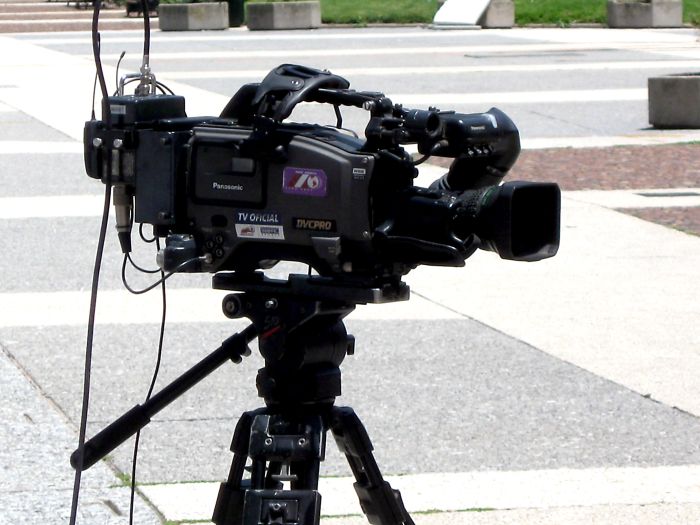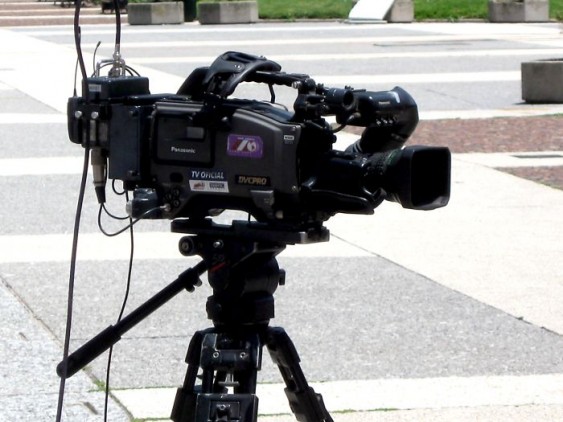Let’s face it; few of us speak in perfect, clear, stirring, and memorable soundbites. But scientists are particularly apt to load their communications with so many caveats and so much detail that non-scientists have a hard time determining whether they’ve said anything definitive at all!
Scientists have good reason to be cautious in their communications—and in a politically charged environment, climate scientists are particularly gun shy. Too much simplification—let alone personal or emotional appeals—may tread too far outside the scientific norms of dispassionate objectivity, and put a scientist’s credibility on the line. For many scientists, the moral dimensions of their work are self-evident. But articulating them is risky.
The problem is that political opponents of climate action often portray the caveats and caution as evidence that scientists are unsure of their findings.
So, what should a scientist do?
Richard C. J. Somerville and Susan Jay Hassol offer some tips for climate science communicators in the October issue of Physics Today, along with a good overview the most common pitfalls of climate communications and the political and cultural context in which climate scientists must operate.
Four of Somerville and Hassol’s recommendations seem most important and most appropriate for scientists. I’ve boiled them down here.
The Art of Talking Climate Science
1. Emphasize what is known. Stop leading with unknowns, caveats, and disclaimers.
2. Invert the standard order for reporting. Start with the main point, then give the background.
3. Less is more. Stick to simple, clear messages about what’s important and repeat them often.
4. Stop speaking in code. Choose plain language over technical terms, insider jargon, and acronyms.
1. Emphasize what is known (a.k.a. Stop leading with unknowns, caveats, and disclaimers)
When communicating with colleagues, scientists tend to skip over the basics (which their colleagues already know), lead with caveats, and then dive straight into details—especially new, cutting-edge findings. But when communicating with the public, scientists often forget how little is known about climate change by the general public and the perception that even the basics are unproven or disputed among scientists. As Somerville and Hassol put it, “it’s…important to repeat what is scientifically well understood to a public for whom the well-established older findings may still be mysterious.”
When asked about climate and extreme weather, for example, many scientists will start off with a disclaimer, such as “We cannot blame any particular event on climate change.” But following Somerville and Hassol’s advice, a scientist could start the conversation emphasizing the well-understood connections between climate change and the increasing likelihood of extreme weather. There’s no need exaggerate, and no point in fear mongering—stick to what’s solid and defensible. The key is to leave the disclaimers until later—or else they’re all anybody will hear.
2. Invert the standard order for reporting. (a.k.a. Start with the main point, then give the background)
Scientists are accustomed—even trained—to start with background information, then add supporting details, and finally delivering their conclusions—the main point—at the tail end of their communications. This is how it’s done at a conference or in a paper.
But for talking with anyone other than their peers, it’s better to “invert that pyramid” and begin with the main point.
3. Less is more.
An academic conference is world’s away from an interview with a reporter where an expert may only have 30 seconds—or one short quote—to convey what’s important about scientific findings to mainstream audiences. Even if you have the opportunity to say more, people can have trouble sorting out what’s important. As Sommerville and Hassol point out, scientists who know a lot about a topic tend to “overdo the level of detail.” They recommend scientists craft simple, clear messages about what’s important and repeat them often. Less is more.
4. Stop speaking in code (a.k.a. Choose plain language over technical terms, insider jargon, and acronyms).
We can cultivate much greater understanding of climate science by using words that more people understand. Rather than “anthropogenic,” it’s better for scientists to say “human-caused.” Drop “spatial” and “temporal” for regular old “space” and “time.” Use familiar units of measure; for the American public, that means using feet instead of meters and Fahrenheit instead of Celsius.
There is also scientific “code” to indicate likelihood and certainty. Unfortunately, this language can totally backfire when non-scientists hear it. Indeed, Somerville and Hassol point out that some words and phrases, commonly used by scientists, lead to confusion among lay audiences. In fact, they write, “many terms mean completely different things to scientists and the public.” Here are a few of the biggest offenders:
- “Consensus” sounds to laypeople like mere opinion.
- “Uncertainty” sounds like head-scratching or ignorance.
- “Theory” sounds like a mere hunch or speculation.
- “Likely” and even “very likely” translate as: not going to happen.
- “Inevitable” can sound like nothing can be done.
Sommerville and Hassol offer better choices for reaching clarity among non-scientists (and here’s a full list):
| Scientific term | Public meaning | Better choice |
| enhance | improve | intensify, increase |
| aerosol | spray can | tiny atmospheric particle |
| positive trend | good trend | upward trend |
| positive feedback | good response, praise | vicious cycle, self-reinforcing cycle |
| theory | hunch, speculation | scientific understanding |
| uncertainty | ignorance | range |
| error | mistake, wrong, incorrect | difference from exact true number |
| bias | distortion, political motive | offset from an observation |
| sign | indication, astrological sign | plus or minus sign |
| values | ethics, monetary value | numbers, quantity |
| manipulation | illicit tampering | scientific data processing |
| scheme | devious plot | systematic plan |
| anomaly | abnormal occurrence | change from long-term average |
There are some other messaging tips in the article, including recommendations that I’ve highlighted in the past for just about anybody charged with communicating about climate change—the need to frame climate change not just as an environmental issue but also as a question of our economic security and human health, for one, as well as the importance of talking about solutions—both our ability to and the necessity to solve the problem—when we talk about the science.
Somerville and Hassol also encourage climate scientists to “let their passion show.”
But, for many scientists I fear all that may be too much to ask.
While I don’t discourage scientists from considering those recommendations and applying them whenever appropriate, I picked out the four tips I highlighted above because I think scientists are more likely to actually employ them—the ultimate test of their usefulness. These four are powerful, I think, because they represent fairly small changes in the way scientists present information but hold the potential to dramatically change the way non-scientists hear and absorb that information.
That’s my take. If you are a scientist, please let me know what you think!












Eldan Goldenberg
Thanks for writing this up. I think it’s useful advice for scientists talking about any topic to a non-expert audience.
I was surprised by the finding that “consensus” is interpreted so weakly by the general public. Do you have / did you see any suggestions for what to use instead of that word?
Paul Guinnessy
Glad you enjoyed the article. For reference purposes the article can be found at http://dx.doi.org/10.1063/PT.3.1296 for its permanent url. The article will remain free for the foreseeable future.
John Browne
In place of “consensus” I’d use “agreement”. ^..^
David Hamm
Nicely done. I’m hoping to show the table to a few non-scientists when the topic of the media distortion of science comes up. I wonder if that alone will make an impact.
Georgie Bright Kunkel
Am I being too picky by mentioning that I thought it was
soundbytes and not soundbites.
Otherwise the article is thought provoking.
Alecia Spooner
Wonderful advice for science educators. Thank you. 🙂